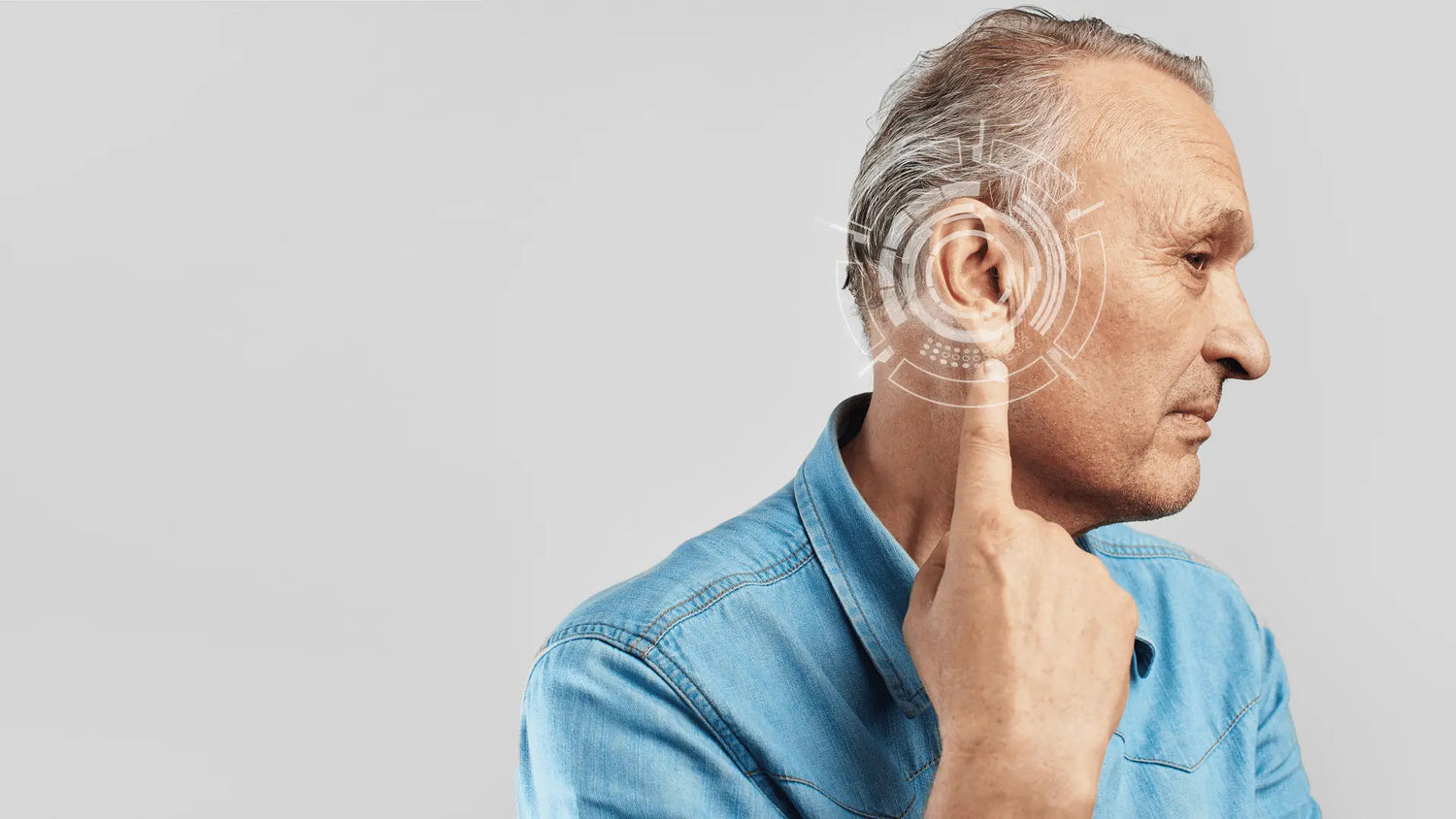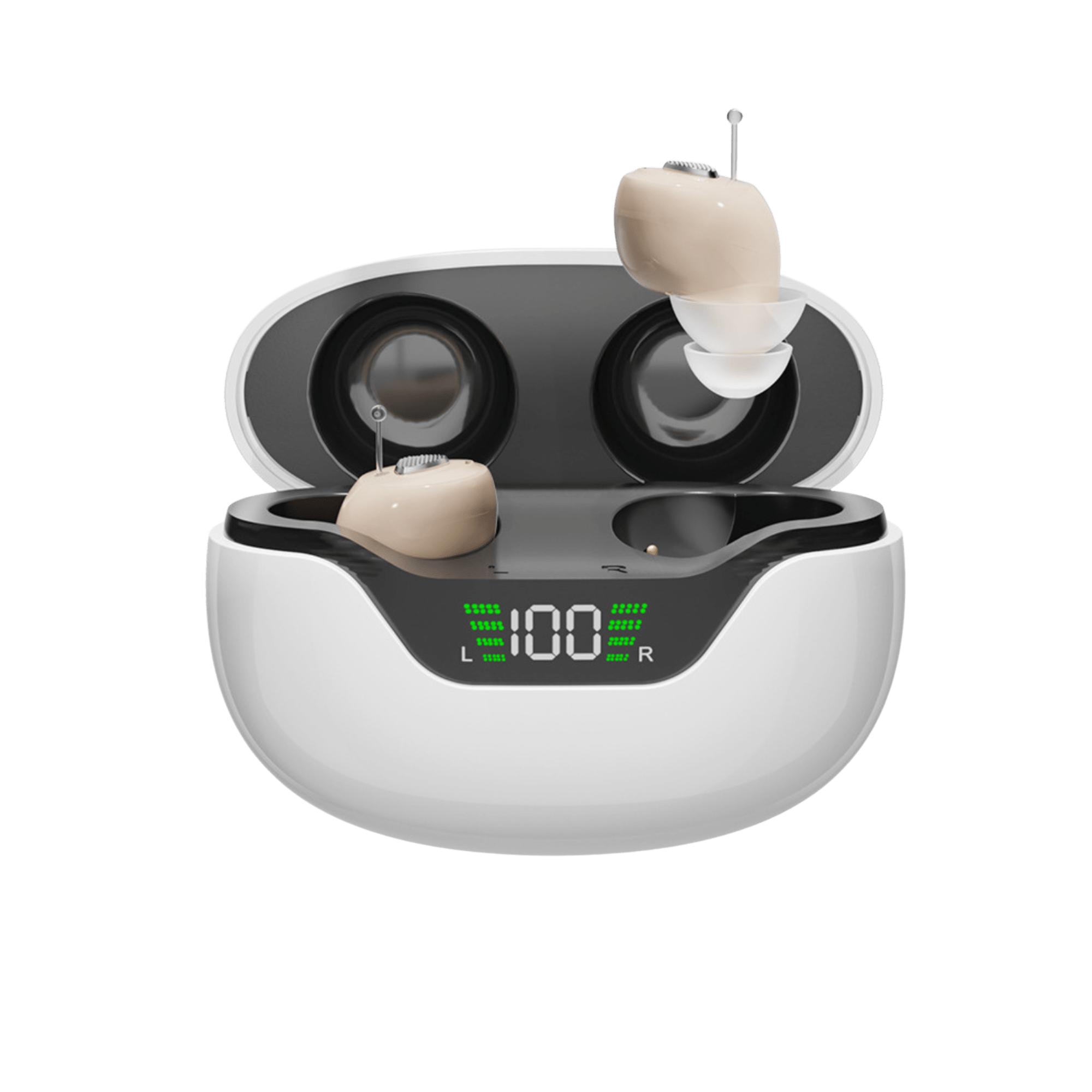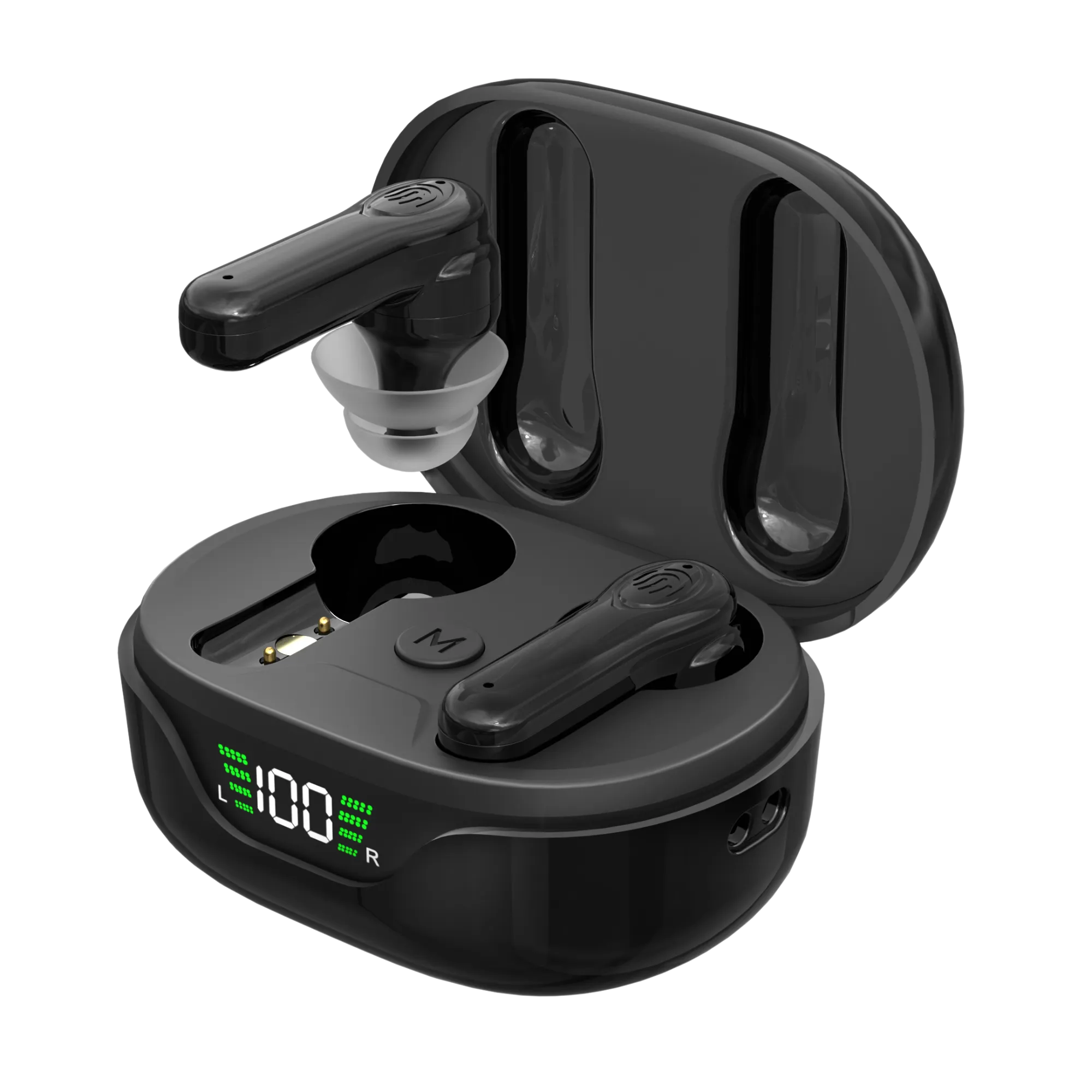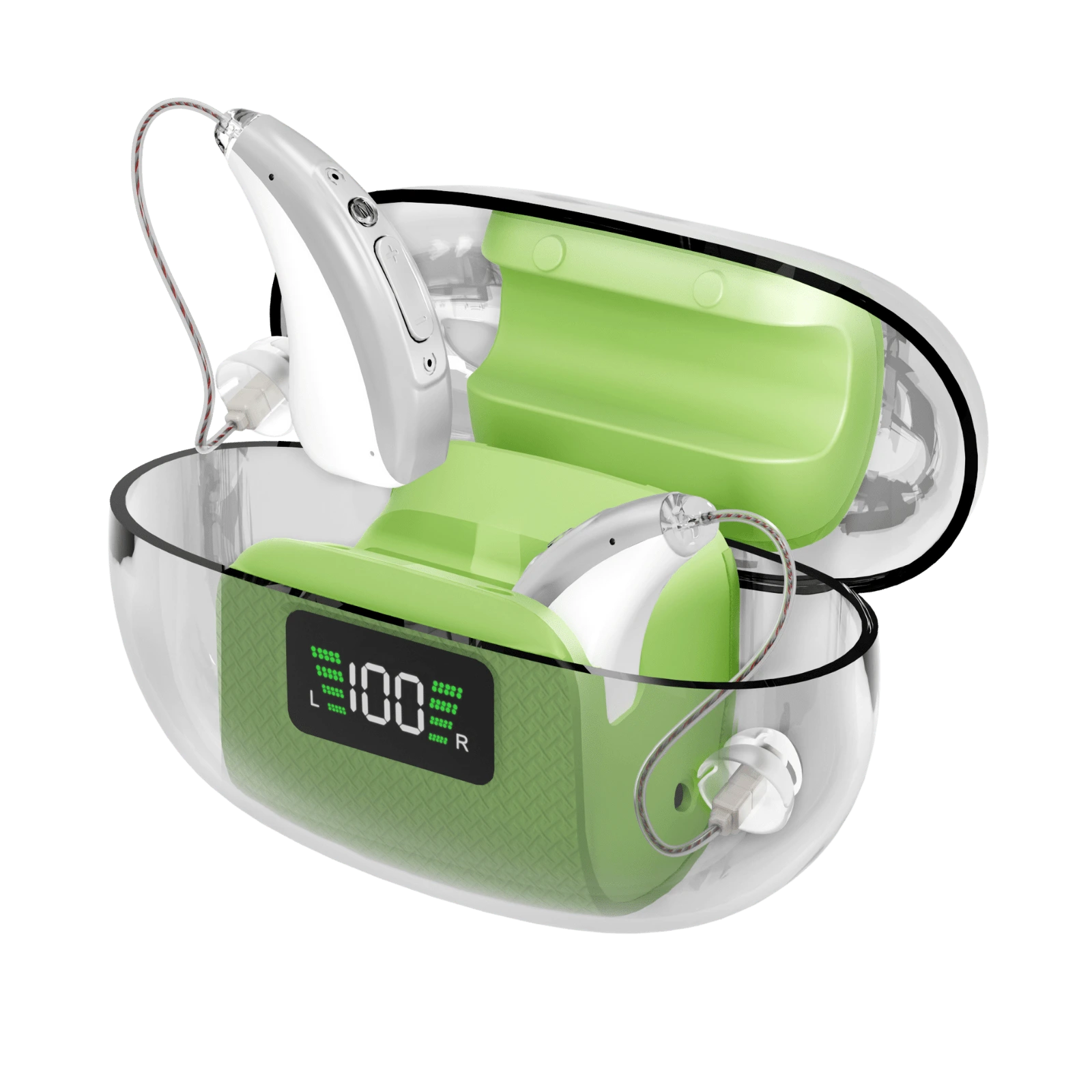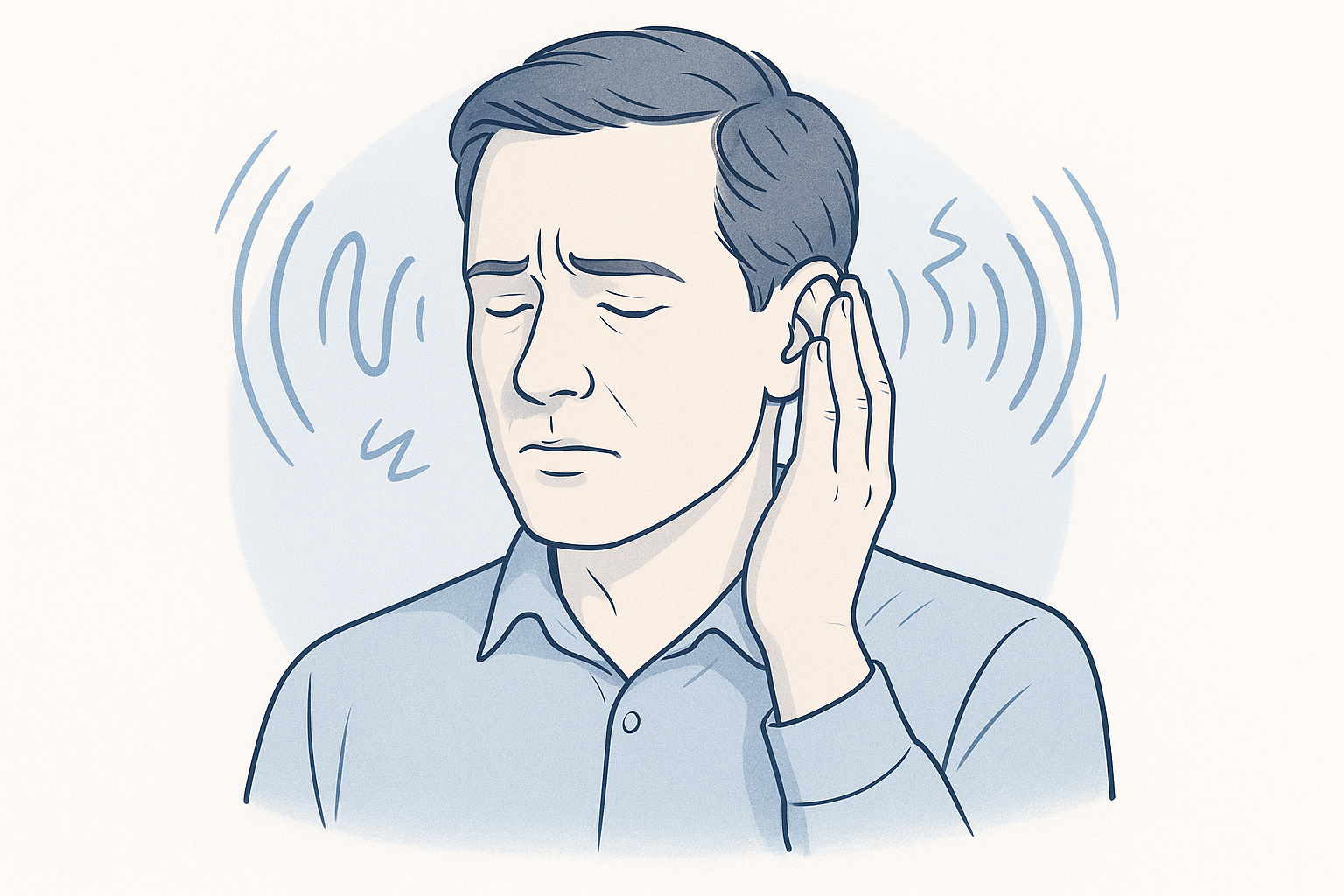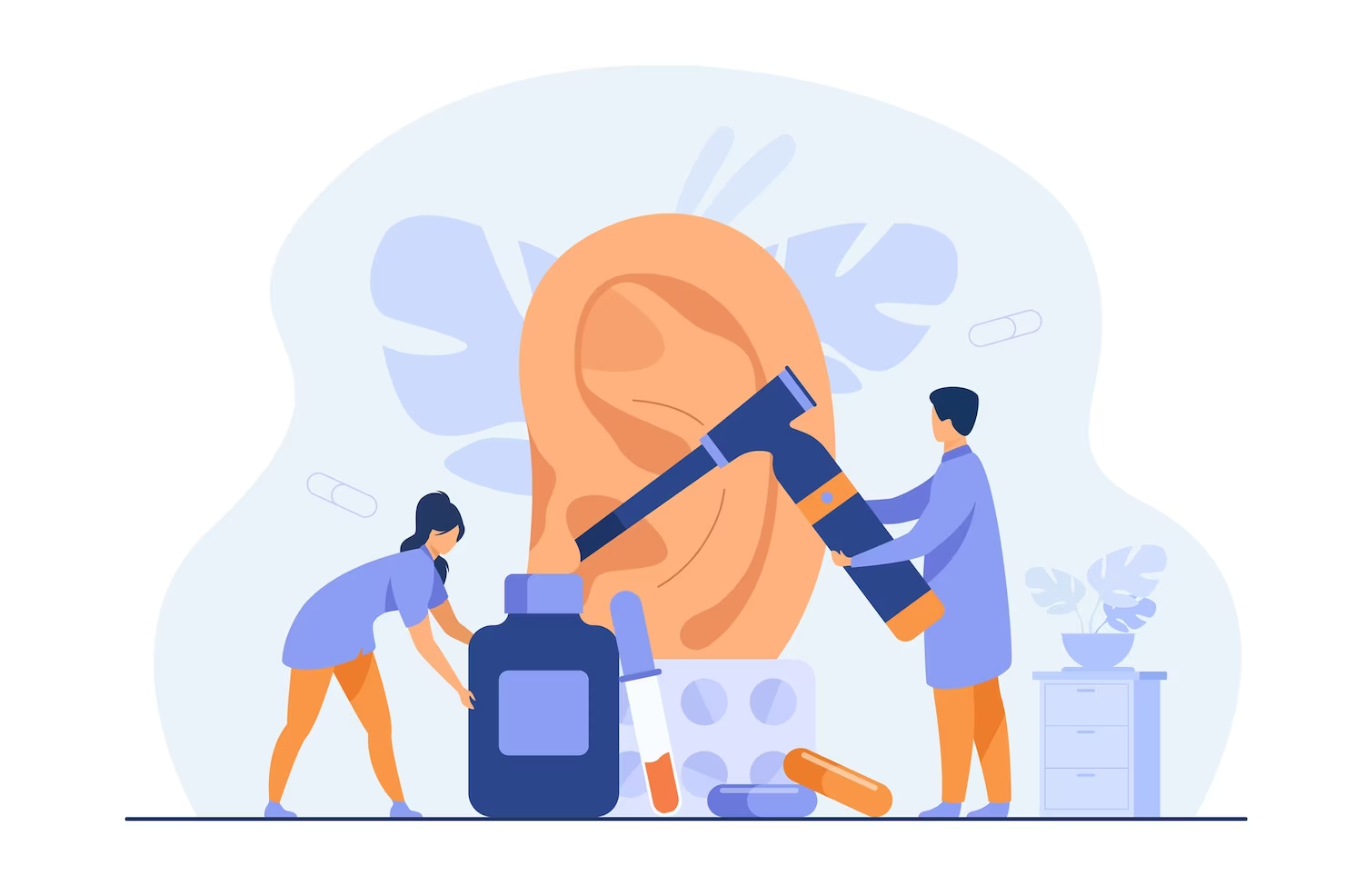Hearing aids are amazing tools that have made a big difference in the lives of millions of people who have trouble hearing. They connect people to the sounds of the world, making it easier for people to talk to each other, have better social relationships, and get more out of everyday life. Have you ever thought about how hearing aids work? Let's look into the cool science that makes these small but powerful devices work.
What you need to know about hearing loss
Before getting into how hearing aids work, it's important to understand the basics of hearing loss. Hearing loss happens when you can't hear things as well as you used to. It can be caused by a number of things, like getting older, being around a lot of noise, your genes, or a medical problem.
Most of the time, hearing loss makes it hard to hear certain frequencies or the general volume of sound. It can make it hard to hear high-pitched sounds, like birds chirping, as well as low-pitched sounds, like deep speech.
What's Inside a Hearing Aid
To understand how hearing aids work, let's look at their main parts:
The microphone is the part of a hearing aid that lets sound in. It listens to the sounds around it and turns them into an electrical signal.
The electrical information from the microphone is sent to the amplifier, which boosts its strength. It makes the sound source louder and clearer at the same time.
Receiver (or Speaker): The receiver is what turns the electrical signal that has been boosted back into sound. It sends the sound that has been improved right into the ear canal.
Battery: The hearing aid is powered by the battery, which gives the parts the energy they need to move and process sound.
Controls and Settings: Hearing aids often have controls like volume and program choices that can be changed by the wearer. This lets them customize how they hear.
Processing Chip: Digital processing chips are a part of modern hearing aids. This chip studies and changes the sound signal to make it work best for the person wearing it.
How Sound Travels Through a Hearing Aid
Now, let's look at how sound gets from a hearing aid to the ears of the person who wears it:
Sound capture: The microphone is the first part of the process. It picks up sounds from the surroundings. The microphone can pick up both soft and loud sounds because of how sensitive it is.
Signal Conversion: Once the microphone picks up the sound, it changes the acoustic information into electrical signals. The information about the sound waves is carried by these electrical signals.
Signal amplification: The electrical messages are then sent to the amplifier, which makes them stronger. The amplifier boosts the sound output based on how the user has set it up and what their hearing needs are.
Signal Processing: The electrical data in digital hearing aids of today are sent through a chip that does the processing. This chip listens to the sound, figures out what it is, and filters out background noise to make words clearer. The processing chip can be set and changed to fit the specific hearing loss profile of the person who wears it.
Signal Conversion Back to Sound: The electrical signals that have been changed are then sent to the hearing aid's receiver, which is its speaker. The receiver turns the electrical data back into sound waves and sends them right into the ear canal.
Sound perception: The sound waves made by the receiver pass through the ear canal and hit the eardrum. The sound waves make the eardrum move, and these movements are sent to the cochlea through the middle ear.
Cochlear Stimulation: When sound waves vibrate, they trigger tiny hair cells in the cochlea. These hair cells turn the sound's mechanical energy into electrical signals. The auditory nerve then sends these electrical messages to the brain, where they are processed and heard as sound.
Hearing aid types
Hearing aids come in different styles and shapes to fit different levels of hearing loss and the tastes of the people who wear them. Here are some popular ones:
Behind-the-Ear (BTE) hearing aids sit behind the ear and connect to an earmold or a custom-fitted earpiece. They can help people with a wide range of hearing problems and have more features and power.
In-the-Ear (ITE): ITE hearing aids are made to fit inside the ear canal and are custom-made. They are bigger than the ones that fit in the canal, but they have more features and are easier to handle.
In-the-Canal (ITC): ITC hearing aids are made to fit partly in the ear canal and are custom-made for each person. They are less obvious than BTE or ITE types and work for mild to moderate hearing loss.
Completely-in-Canal (CIC) hearing aids fit deep inside the ear canal and are the smallest custom-made hearing aids. When worn, they are almost unnoticeable and can help people with mild to moderate hearing loss.
Receiver-in-Canal (RIC): RIC hearing aids are similar to BTE aids, but the receiver (speaker) is put inside the ear canal. They have a more realistic look and sound and don't stand out as much.
Changes in the way hearing aids work
Hearing aids have come a long way thanks to the constant improvement of technology. Modern hearing aids have advanced functions and features, such as:
Digital Signal Processing: Digital hearing aids use complex algorithms to study and process sound signals, which improves sound quality and reduces noise.
Directional microphones focus on sounds coming from the front and reduce sounds coming from other directions. This makes it easier to understand words in noisy places.
Wireless connectivity: Many hearing aids can now connect to smartphones, TVs, and other devices wirelessly. This makes it possible to stream music directly and improves the overall listening experience.
Rechargeable Batteries: Hearing aids with rechargeable batteries don't need to have their batteries changed as often, which is both convenient and good for the environment.
Smartphone Apps: Hearing aids can be handled and customized with the help of smartphone apps. This lets people change settings, switch between programs, and even keep track of their hearing health.
Getting Help from a Professional
To make sure hearing aids work and help you the most, it is important to talk to a hearing healthcare provider. They will do a full hearing test, suggest the best type and features of hearing aid, and offer ongoing help with fitting, programming, and making changes.
Conclusion
Hearing aids are sophisticated gadgets that use technology to help people who have trouble hearing hear better. They let people get back in touch with the world of sound by recording, amplifying, processing, and changing sounds. Understanding how hearing aids work and how technology has improved makes it easier to see how much these devices improve communication, quality of life, and general health.
What you need to know about hearing loss
Before getting into how hearing aids work, it's important to understand the basics of hearing loss. Hearing loss happens when you can't hear things as well as you used to. It can be caused by a number of things, like getting older, being around a lot of noise, your genes, or a medical problem.
Most of the time, hearing loss makes it hard to hear certain frequencies or the general volume of sound. It can make it hard to hear high-pitched sounds, like birds chirping, as well as low-pitched sounds, like deep speech.
What's Inside a Hearing Aid
To understand how hearing aids work, let's look at their main parts:
The microphone is the part of a hearing aid that lets sound in. It listens to the sounds around it and turns them into an electrical signal.
The electrical information from the microphone is sent to the amplifier, which boosts its strength. It makes the sound source louder and clearer at the same time.
Receiver (or Speaker): The receiver is what turns the electrical signal that has been boosted back into sound. It sends the sound that has been improved right into the ear canal.
Battery: The hearing aid is powered by the battery, which gives the parts the energy they need to move and process sound.
Controls and Settings: Hearing aids often have controls like volume and program choices that can be changed by the wearer. This lets them customize how they hear.
Processing Chip: Digital processing chips are a part of modern hearing aids. This chip studies and changes the sound signal to make it work best for the person wearing it.
How Sound Travels Through a Hearing Aid
Now, let's look at how sound gets from a hearing aid to the ears of the person who wears it:
Sound capture: The microphone is the first part of the process. It picks up sounds from the surroundings. The microphone can pick up both soft and loud sounds because of how sensitive it is.
Signal Conversion: Once the microphone picks up the sound, it changes the acoustic information into electrical signals. The information about the sound waves is carried by these electrical signals.
Signal amplification: The electrical messages are then sent to the amplifier, which makes them stronger. The amplifier boosts the sound output based on how the user has set it up and what their hearing needs are.
Signal Processing: The electrical data in digital hearing aids of today are sent through a chip that does the processing. This chip listens to the sound, figures out what it is, and filters out background noise to make words clearer. The processing chip can be set and changed to fit the specific hearing loss profile of the person who wears it.
Signal Conversion Back to Sound: The electrical signals that have been changed are then sent to the hearing aid's receiver, which is its speaker. The receiver turns the electrical data back into sound waves and sends them right into the ear canal.
Sound perception: The sound waves made by the receiver pass through the ear canal and hit the eardrum. The sound waves make the eardrum move, and these movements are sent to the cochlea through the middle ear.
Cochlear Stimulation: When sound waves vibrate, they trigger tiny hair cells in the cochlea. These hair cells turn the sound's mechanical energy into electrical signals. The auditory nerve then sends these electrical messages to the brain, where they are processed and heard as sound.
Hearing aid types
Hearing aids come in different styles and shapes to fit different levels of hearing loss and the tastes of the people who wear them. Here are some popular ones:
Behind-the-Ear (BTE) hearing aids sit behind the ear and connect to an earmold or a custom-fitted earpiece. They can help people with a wide range of hearing problems and have more features and power.
In-the-Ear (ITE): ITE hearing aids are made to fit inside the ear canal and are custom-made. They are bigger than the ones that fit in the canal, but they have more features and are easier to handle.
In-the-Canal (ITC): ITC hearing aids are made to fit partly in the ear canal and are custom-made for each person. They are less obvious than BTE or ITE types and work for mild to moderate hearing loss.
Completely-in-Canal (CIC) hearing aids fit deep inside the ear canal and are the smallest custom-made hearing aids. When worn, they are almost unnoticeable and can help people with mild to moderate hearing loss.
Receiver-in-Canal (RIC): RIC hearing aids are similar to BTE aids, but the receiver (speaker) is put inside the ear canal. They have a more realistic look and sound and don't stand out as much.
Changes in the way hearing aids work
Hearing aids have come a long way thanks to the constant improvement of technology. Modern hearing aids have advanced functions and features, such as:
Digital Signal Processing: Digital hearing aids use complex algorithms to study and process sound signals, which improves sound quality and reduces noise.
Directional microphones focus on sounds coming from the front and reduce sounds coming from other directions. This makes it easier to understand words in noisy places.
Wireless connectivity: Many hearing aids can now connect to smartphones, TVs, and other devices wirelessly. This makes it possible to stream music directly and improves the overall listening experience.
Rechargeable Batteries: Hearing aids with rechargeable batteries don't need to have their batteries changed as often, which is both convenient and good for the environment.
Smartphone Apps: Hearing aids can be handled and customized with the help of smartphone apps. This lets people change settings, switch between programs, and even keep track of their hearing health.
Getting Help from a Professional
To make sure hearing aids work and help you the most, it is important to talk to a hearing healthcare provider. They will do a full hearing test, suggest the best type and features of hearing aid, and offer ongoing help with fitting, programming, and making changes.
Conclusion
Hearing aids are sophisticated gadgets that use technology to help people who have trouble hearing hear better. They let people get back in touch with the world of sound by recording, amplifying, processing, and changing sounds. Understanding how hearing aids work and how technology has improved makes it easier to see how much these devices improve communication, quality of life, and general health.
